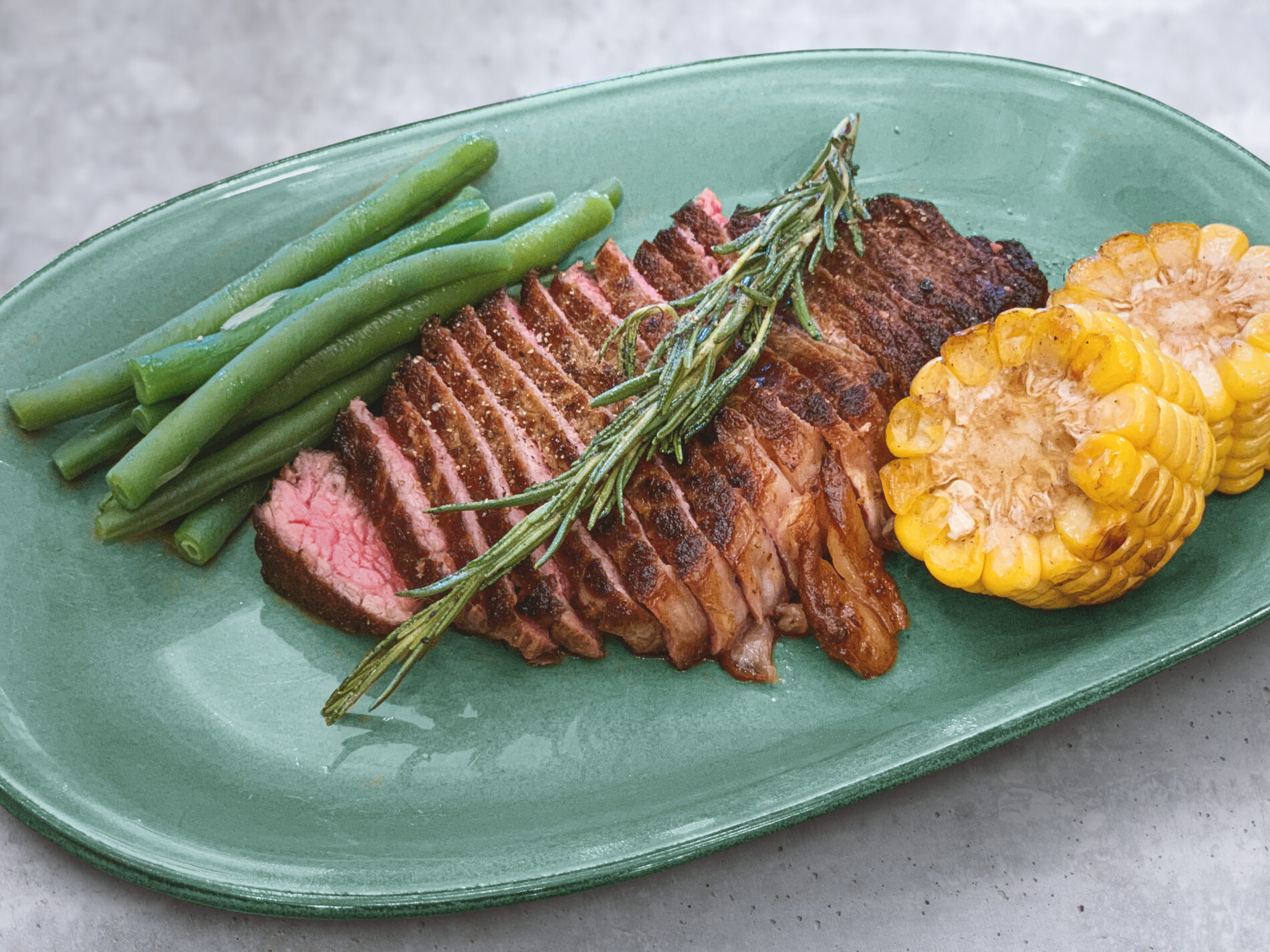Dry-aged meat is on everyone’s lips. Literally. The aromatic meat seduces numerous meat lovers and often leaves a lasting flavourful impression. In this article, we explain how the wonderfully aromatic meat is produced and what is important.
What is Dry Ageing?
Beef is an ideal choice for the dry-ageing process. It is more resistant to germs than poultry meat, for example, and has the longest maturing time. “Dry aged” means that the meat is matured on the bone in the open air. This maturing takes place in special cooling chambers between 0 and 2 degrees Celsius. This dry ageing develops an outstanding flavour and the aromas of the meat develop. During the drying process, the meat loses up to 20% of its weight due to evaporation and is therefore not very economical for the producer. Consequently, the prices for Dry Aged Meat are in the higher price range and are considered a delicacy. In addition, specially ventilated cold storage rooms are necessary for production, which guarantee a permanent exchange of air and constant humidity. To prevent the meat from spoiling, it must also be sterilised. Only under these conditions can the wonderful taste of Dry Aged Meat emerge.
Advantages of Dry Aged Beef
Dry-ageing the meat changes both the texture and the distinctive flavours of butter and nut. Because the meat becomes tender, the fibres also become softer and the steak is altogether more tender. Furthermore, due to the formation of the pigment myoglobin, the meat turns an appealing dark red. Due to the evaporation of the stored water, the sweet-tasting sugars and the flavour-enhancing proteins accumulate. Consequently, an intense meat flavour is created by the removal of water and the increase in the concentration of molecules. In addition, oxidation of the fat takes place. Since beef in particular has a high proportion of saturated fatty acids, the wonderful aroma develops after oxidation. Consequently, dry ageing requires a pronounced marbling of fat to fully preserve the unique flavour.
Why Does Dry Aged Meat Not Mould?
Since condensation always forms on the surface of the meat, which would cause it to spoil, you cannot simply make your own dry-aged meat in a conventional refrigerator. However, the low temperature plays an essential role so that the meat does not start to mould. Since the air in a dry-ageing room is constantly circulated, the surface dries out to such an extent that only certain micro-organisms can colonise, which are harmless to the meat. In addition, producers only use parts of the beef for dry-ageing that do not have large cut surfaces with muscle tissue and have a thick layer of fat. Small cut surfaces can dry slowly and only allow a small amount of moisture to escape, which means that the meat loses increasingly less moisture.
Dry Aged Meat: Make it Yourself
Dry ageing your own meat takes effort and patience. However, if you take your time and enjoy it, you will soon benefit from the delicious taste and low cost of your own Dry Aged Meat. Producing in a Dry Ager is probably the easiest way to make your own Dry Aged Meat. This small curing oven allows you to produce several kilos of Dry Aged Meat. In the cabinet, there is a constant humidity of about 85% and a temperature of 2°C. Furthermore, regular disinfection takes place, which is carried out by means of an activated carbon filter. These cabinets are now available without a power supply and can be easily installed in the home.
Another technique is ageing in special bags. These are permeable to oxygen, but not to odours and bacteria. This way you can let the dry-aged meat mature in the fridge next to your fruits and vegetables. However, a good vacuum sealer is essential. This is what creates the really good welded seams that contribute significantly to the maturing process. Furthermore, the refrigerator temperature plays an important role in the bag method and should not be underestimated. Only at the right temperature are the enzymes active and make ripening possible. A stable temperature is therefore the most important thing in the whole process. After three weeks in the refrigerator, dry ageing is complete and the meat is ready to be enjoyed.
Dry Aged Beef: Fermented Meat
The meat ageing process also falls under the term fermentation. The moisture that is needed during the ageing process is the basis for the microorganisms that process the meat. Lactic acid bacteria settle on the surface of the meat. These decompose the meat and at the same time enhance the flavour.
In summary, Dry Aged Meat is always more intensive, more interesting and mainly more aromatic in taste and is therefore indispensable for connoisseurs….











What do you think?